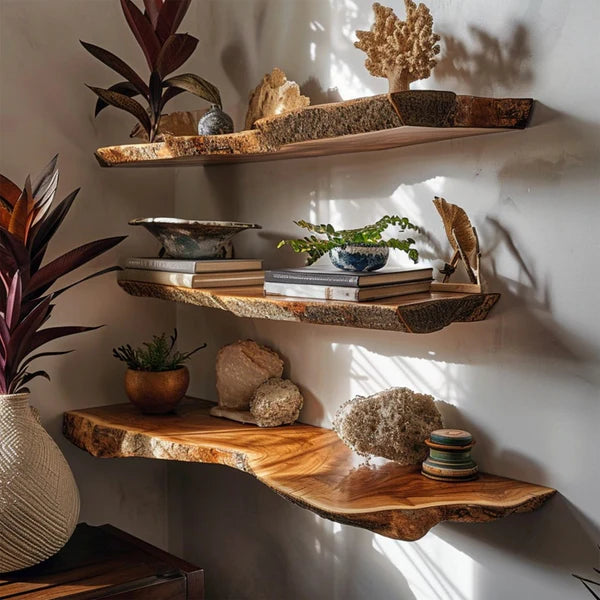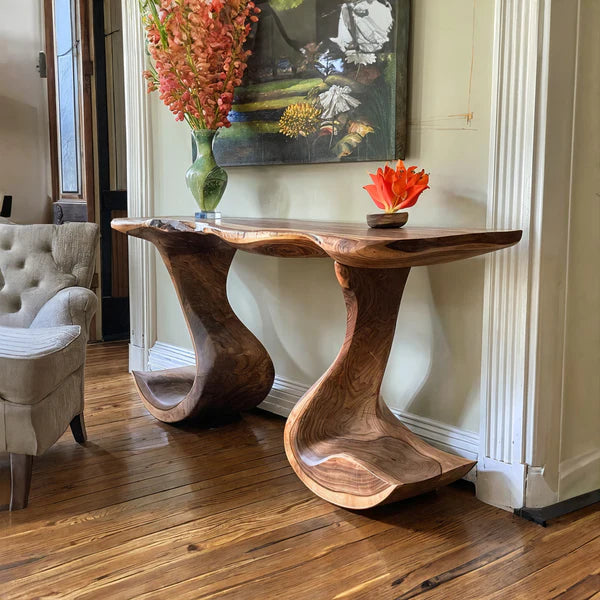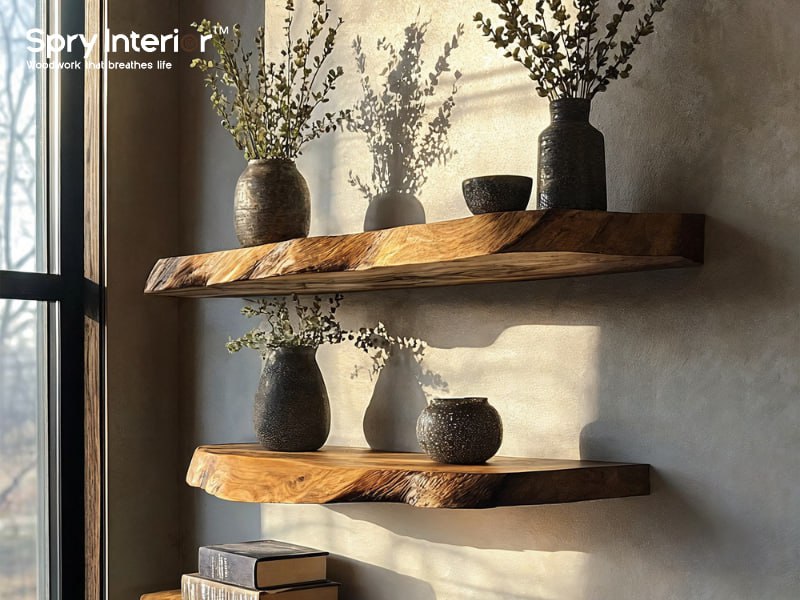Are floating shelves out of style in 2025? As we step into a new decade, it's essential to keep up with the changing trends in interior design. Floating shelves, once seen as the epitome of modern, minimalist design, have become a staple in homes and offices. However, as trends evolve, many homeowners are wondering if these shelves are still in vogue or if they’ve been replaced by something new.
While wet bar floating shelves remain popular for certain applications, like bars and living rooms, others question the practicality and aesthetics of floating shelves in 2025. In this post, we'll delve into the pros and cons of floating shelves, explore the differences between wet bars and dry bars, and assess whether they are still a top choice for your home décor.
The Evolution of Floating Shelves in Interior Design
Floating shelves have been a design staple for years, gaining popularity in both modern and transitional spaces. They offer a minimalist, sleek, and functional look, often creating an illusion of more space in smaller rooms. Floating shelves are versatile and can be used in almost any room in the house, from kitchens to living rooms, and even bathrooms.
Why Floating Shelves Were So Popular
The rise of floating shelves began in the early 2000s, when modern and minimalist aesthetics became the focal point of interior design. Floating shelves fit seamlessly into this look due to their clean lines and ability to make a room feel more open. The lack of visible brackets creates a floating illusion, which gives the shelves a lighter, less cluttered appearance. SpryInterior, a brand specializing in modern furniture, offers a wide variety of floating shelf designs that complement the trend.

What Has Changed in 2025?
As we approach 2025, design trends are shifting. While floating shelves still hold appeal in many spaces, there's been a noticeable move towards more solid, built-in shelving and storage solutions. The demand for more practical, less maintenance-intensive designs is on the rise. For instance, wet bar floating shelves, though still functional for certain design schemes, are now being replaced with more structured, cabinetry-based bar stations in many homes.

Buy now: Live Edge Floating Shelves
The Pros and Cons of Floating Shelves
Floating shelves offer numerous benefits, but they also come with a few drawbacks that homeowners should consider before making a decision.
Advantages of Floating Shelves
One of the primary advantages of floating shelves is their space-saving design. These shelves create the illusion of more room, making them ideal for smaller spaces like apartments and studio units. They are also customizable, allowing homeowners to create a unique storage solution tailored to their needs. Whether in a kitchen, living room, or even a bathroom, floating shelves provide versatile storage for everything from books to decorative pieces.

Disadvantages of Floating Shelves
Despite their sleek appearance, floating shelves are not without their drawbacks. One of the main concerns is their weight-bearing capacity. Because they lack visible supports, many floating shelves are limited in how much weight they can hold, especially if not installed correctly. What are the disadvantages of floating shelves? In some cases, heavier items or large collections of objects may cause the shelves to sag or, in worse cases, fall off the wall.

Additionally, the installation process for floating shelves can be more complicated than traditional shelving. Proper anchoring and support are crucial to ensure that the shelves remain sturdy. This often requires drilling into the wall, which may not be ideal for renters or those who prefer a non-permanent solution.
Wet Bars and Dry Bars: Understanding the Difference
When it comes to bars in your home, the terms "wet bar" and "dry bar" are often used interchangeably, but they refer to distinct concepts. What is the difference between a wet bar and a dry bar? Understanding these differences can help you determine whether wet bar floating shelves are the right choice for your space and needs.
What is a Wet Bar?
A wet bar is a small, self-contained bar area typically found in a home. It features a sink and running water, making it ideal for preparing cocktails and washing glasses. A wet bar floating shelf can be an excellent addition to this area, providing space for liquor bottles, glasses, and cocktail-making tools. The floating design ensures that the shelves don’t take up valuable counter space, maintaining a streamlined look.

What is a Dry Bar?
A dry bar, on the other hand, is a bar area without a sink or running water. Dry bars are ideal for storing bottles and glassware but require less plumbing work to install. While wet bar floating shelves are common in wet bars, dry bars might not always require floating shelves, as they can rely on more conventional shelving or cabinetry.
Why Floating Shelves May Be Losing Popularity in 2025
While floating shelves have their place in modern homes, there are several reasons they may be falling out of favor.
Changing Preferences in Home Storage
The demand for more durable and practical storage solutions has led many to prefer traditional shelving or built-in units. These options offer greater weight capacity, and they can be customized to fit larger, bulkier items. In contrast, floating shelves often struggle to hold heavier items, making them less ideal for people who need more storage capacity.

Buy now: Rustic Home Bar Natural Wood Shelf For Stylish Wine Bottle Storage
Maintenance and Practicality
Floating shelves are also more difficult to clean and maintain. The gaps between the shelf and the wall can collect dust and grime, making them harder to keep tidy. Additionally, the installation process for floating shelves can be more invasive, which may turn some people away from this design choice in favor of easier, more permanent storage solutions.
How to Incorporate Floating Shelves in 2025
If you still love floating shelves and want to incorporate them into your 2025 home design, there are a few things to keep in mind.
Focus on Style and Functionality
To keep up with the times, floating shelves should serve a dual purpose in your home. Opt for shelves that are both visually appealing and functional. Consider using wet bar floating shelves in areas like home bars or living rooms, where they can offer both storage and style. For other spaces, like kitchens or bathrooms, consider using floating shelves to display decorative pieces or essential items that need easy access.

Combine Floating Shelves with Other Storage Solutions
While floating shelves might not be as popular as they once were, you can still use them effectively by combining them with other storage solutions. For example, pair wet bar floating shelves with cabinets or built-in shelves to create a well-rounded and functional bar area. In living rooms, floating shelves can complement wall-mounted TVs or modular shelving units for a clean, organized look.
Conclusion
In conclusion, floating shelves may not be as dominant in interior design as they once were, but they are by no means obsolete. Their minimalist style, versatility, and space-saving benefits still make them a valuable design element for many homes.
If you're looking to incorporate floating shelves into your 2025 home, be sure to consider the practicality of the shelves for your specific needs, such as wet bar floating shelves for your home bar or a blend of floating shelves with traditional storage for a more functional, balanced approach. Ultimately, whether floating shelves remain in style or not depends on how they are integrated into modern living spaces, and they can still be a timeless choice if used correctly.








Leave a comment
This site is protected by hCaptcha and the hCaptcha Privacy Policy and Terms of Service apply.